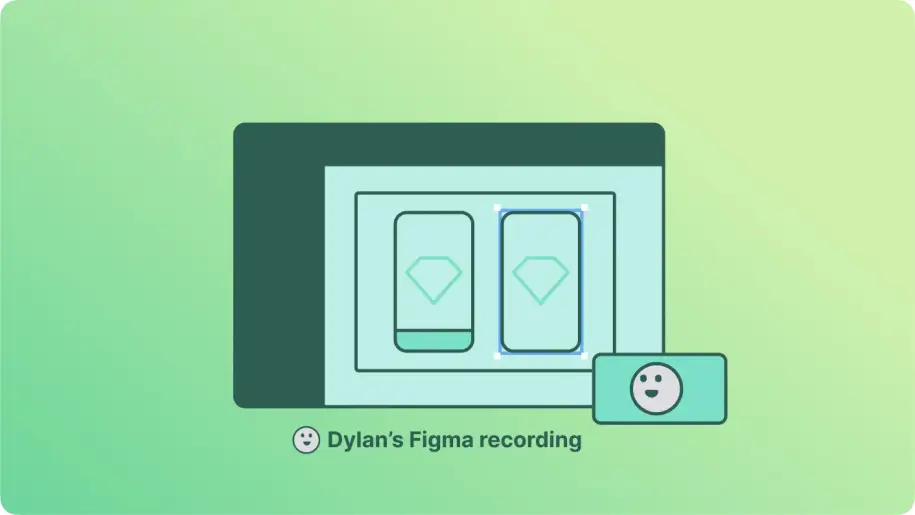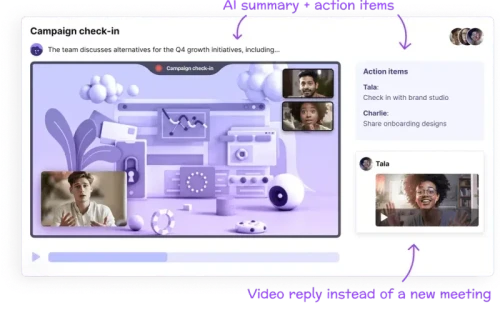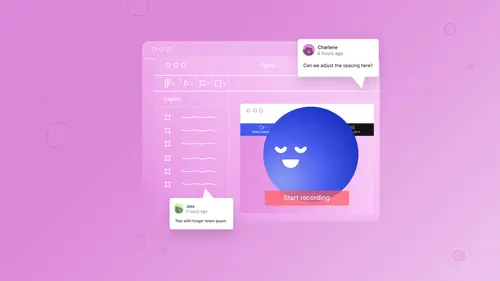
1 on 1 Meeting Agenda: Template Structure and Tips
Spice up your 1 on 1 meetings from aimless chats to productive discussions! Follow these 10 key steps to craft a sharp, effective meeting agenda, ensuring every one-on-one is a valuable, goal-driven conversation.
What is the Purpose of 1 on 1 Meeting Agendas?
1 on 1 meetings have always been an indispensable part of the corporate world, and a way for nurturing the relationship between a manager and their team member. Ben Horowitz, who is an influential figure in the area of management, has in great depth articulated the undeniable value of these interactions. Some of his claims suggest that these meetings transcend mere operational status updates or performance reviews, instead morphing into and representing sessions of trust-building, open communication, and rapport cultivation. This value makes us want to enhance these meetings, and agendas are a good start. This is because with a meticulously curated 1 on 1 meeting agenda, managers can harness the full potential of these interactions, fortifying employee engagement, propelling productivity, and realigning individuals with their overarching professional and career goals.
1 On 1 Meeting Agenda Template Structure
Build Rapport with a Check-in (5 minutes)
Provide Constructive Feedback (10 minutes)
Discuss and Navigate Career Goals (10 minutes)
Conclude with Purpose (5 minutes)
1. Recognizing the Inherent Significance
For us at Bubbles, we believe in productive conversions only, and our view is that productive conversation stems from understanding the real worth behind it. At the core of these 1 on 1 meetings, as clarified by Horowitz, is the intent and desire to nurture a collaborative bond between the manager and the team member. An adeptly crafted and specifically curated meeting agenda template obviously becomes the starting point and the bedrock that begins to create this as it ensures comprehensive solving of each pivotal talking point. Therefore, we have to make sure we are nailing this, and this applies to all of us, as regardless of the collaborative set up within a business, live conversation is crucial for OKR and professional goal reviews and subsequently fosters career development.
2. Championing Collaboration
Our 1 on 1 meeting agendas should resonate with both the voice of the manager and the team member, in an equal fashion. It isn't a one-sided list of agenda items, but rather a collective of concerns, insights, and aspirations. By making sure items from both sides are implemented into the agenda template and present in the discussions, an atmosphere of mutual ownership and collaboration emerges. It is highly beneficial to any business to have a feeling of equality, and can go a long way to increasing morale. You can also begin to increase this through the encouragement of increased asynchronous work, as it aligns with mutual collaboration and fairness; effective planning fosters productivity and by using a tool like Bubbles, we can make sure we are addressing all talking points and action items on our own time and to the best of our ability.
3. The Importance of the Initial Check-in
This is something that cannot be overstated! Whether this looks like a simple conversation with phrases and questions like "hey, how have you been?" or a deeper inquisition into their well-being, it shows care, and acts as a bridge to build rapport and improve team working. Adopting a regular schedule for a 1 on 1 or a check in, be it bi-weekly or weekly, or whatever works for the attendees, and making this check-in a recurring meeting sets the tone for a genuine conversation. Open ended questions such as these aforementioned encourage colleagues to converse freely, increasing comfort and trust, something particularly important in remote work settings. Ultimately, this is key to achieving psychological safety throughout the team.

4. The Criticality of Constructive Feedback
Performance reviews as a clear section within 1 on 1s can develop into constructive feedback sessions on a regular basis. Getting some inspiration from Kim Scott's radical candor philosophy, feedback becomes an essential tool for teamwork, representing a beacon that guides team members in their professional journey and towards success, aiding them in refining their OKRs. We believe trust is essential for constructive feedback to be effective and for employees to provide full attention, hence the stress upon collaboration encouragement. Due to our focus on asynchronous collaboration, this talking point is critical to the success of the Bubbles team, and is covered in more detail within this Bubble.
5. Navigating Your Goals
Dedicated slots in your 1 on 1 meeting agenda should be implemented and focus on the discussion around professional objectives, like OKRs and broader career aspirations and development. We should review our objectives, and how successful we have been over the previous week, for example. Managers and meeting leaders stand as exactly this, leaders, as have a responsibility to bolster the progression towards these goals. Conversations should go into the team member's vision for their career development to gain a full understanding of their happiness in their role, and should thus sometimes cover the roadmap and structure to achieve them within their specific team. This is essential and unlocks less frequent meetings; ensuring the structure to achieve OKRs is present allows team members to progress asynchronously following a 1 on 1.

Make your
meetings matter
Use AI to record, transcribe, and summarize meetings into actions. Bubbles is your home for after-meeting collaboration.
6. Helping the Conversation with Open-Ended Questions
The richness and efficacy of a conversation often revolves around the questions asked by each attendee. Beyond the routine status update, the emphasis should move towards questions that encourage real thought and deeper contemplation. Questions such as "what impediments are affecting your workflow?" or "wow can I help to further bolster your productivity?" can be instrumental and begin to engage the team member further, as they essentially prompt a thoughtful response, often allowing for more developed insight.

7. The Employee Engagement Aspect
Employee engagement, something that is often discussed in team meetings, finds its place with 1 on 1s as well. The meeting agenda template can incorporate segments dedicated to understanding their team experience and their opinion about the team at that moment. This is not just important for boosting team success, but helps ensure we always encourage a good work-life balance. By fostering psychological safety within this space, you ensure that team members feel secure in sharing challenges or concerns, which obviously forms the basis for feedback. Mental comfort and belief is critical to achieving success within a team. The impact on professional goal achievement caused by a converse reality of psychological safety is explained here.
8. The Manager's Role
Our one on one meetings should be more than just a dialogue, but we largely rely on our manager's guidance for this. Managers and meeting leaders, armed with experience and insights, should transform into communication coaches, attempting to guide their team members towards actionable next steps. If discussions go into workload impediments, for example, it can be an opportune moment to coach employee's on strategies for better time management or task prioritization. These concepts are crucial to the efficiency of a team, and represent critical focus points of Bubbles. When collaborating asynchronously, it is essential to clarify respond by times and the importance of insight.
9. Maintaining Momentum with Consistency and Adaptability
While adopting the aforementioned regular rhythm, be it bi-weekly or weekly, etc, is essential for 1 on 1s, there exists a need for adaptability. An efficient meeting agenda template offers structure, but the overarching structure should remain flexible and allow for spontaneous thoughts. Tools like Bubbles can streamline this, ensuring a harmonious balance between consistency and adaptability, and offering a platform for collaboration on shared agendas, note taking, sharing feedback, and assigning next steps. This notion of crucial flexibility is developed below.
10. Concluding with Purpose
When the meeting draws to a close, it's important to summarise the discussed talking points, highlighting the actionable takeaways. Both the manager and the team member should leave that meeting with a comprehensible understanding of the expectations and subsequent next steps, every time they meet. By incorporating Bubbles' notetaker into 1 on 1 meetings, this can be guaranteed and easy, further reinforcing the productivity of the interaction and ensuring alignment for both attendees.
Conclusion
1 on 1s, when carried out effectively, are a valuable asset within a manager's skillset, and a valuable asset for the employee's development. They can enhance employee engagement and performance management, which any leader should want. With the steps we have established here, and a strong meeting agenda template, you should be able to master the creation and performance of these meetings. The mantra remains unchanged: encourage open communication, offer incisive coaching and career development, and build relationships of trust between team members. The result? A harmonious, high-performing team, established in a collaborative workspace.
Collaborate better with your team
Get your point across using screen, video, and audio messages. Bubbles is free, and offers unlimited recordings with a click of a button.

Collaborate better with your team
Get your point across using screen, video, and audio messages. Bubbles is free, and offers unlimited recordings with a click of a button.

Make your
meetings matter
Use AI to record, transcribe, and summarize meetings into actions. Bubbles is your home for after-meeting collaboration.


.png)







